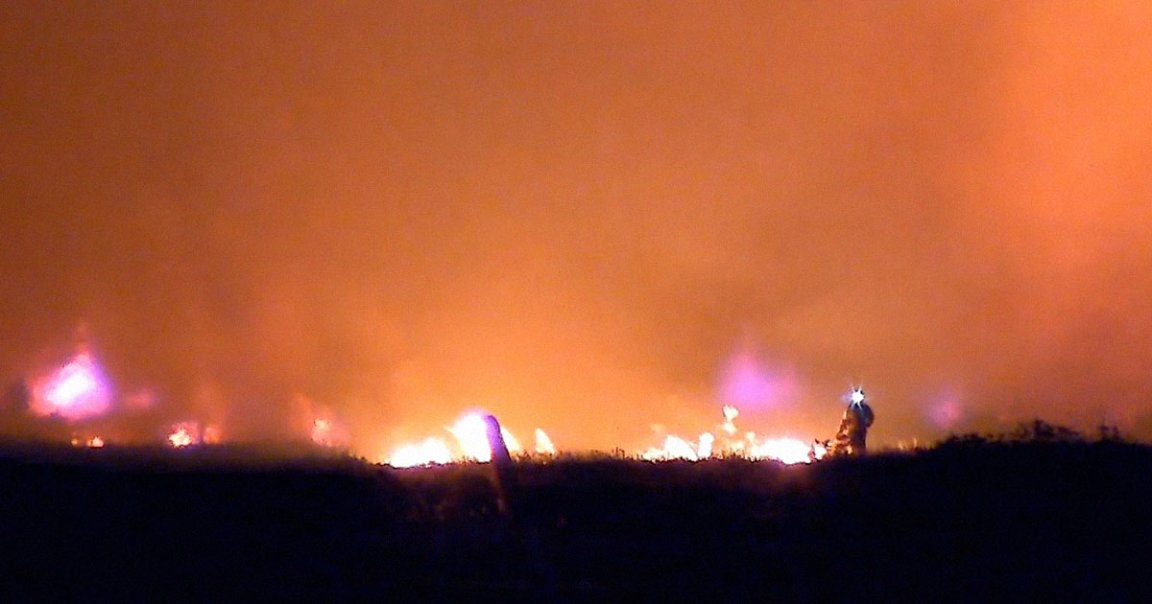
SpaceX is still hard at work trying to get its first orbital flight-ready Starship prototype ready for their big day.
While much bigger news stole the limelight from the company’s testing — Queen Elizabeth II’s death proved to be quite the distraction — SpaceX engineers at the company’s testing facilities near Boca Chica, Texas pulled off a series of successful static fire tests of the experimental spacecraft on Thursday.
But not everything went going according to plan. During static fire engine tests, the massive flames spitting out of the bottom of the company’s Ship 24 prototype lit a nearby patch of vegetation on fire, forcing the company to summon the local fire department.
“Big grass fire unfolding,” tweeted NASASpaceFlight‘s Michael Baylor.
Onlookers were also quick to point out that the conflagration caused a literal dumpster fire, which also formed following the massive ignition.
While it’s certainly not the first — and won’t be the last — fire caused by a massive rocket launch or test fire, the incident goes to show the immense forces involved, and the difficulties in keeping the situation under control.
And that’s not to mention the fact that the offending Starship prototype fired only six Raptor 2 engines. Its Super Heavy booster will eventually fire 33 of them to get itself and Starship off the ground — an awe-inspiring display with a substantially larger potential for an even bigger fire.
SpaceX, for its part, has yet to install a water deluge or fire deflecting system at its testing facilities to stop future fires from burning out of control, Teslarati reports, instead relying on a single spray nozzle to cool things down.
Live streams of Thursday’s testing show black smoke billowing from a green patch near the launch pad after Ship 24 ignited its six massive Raptor 2 engines, disappearing in a massive orange cloud of smoke in a matter of seconds.
It was both one of the longest and most powerful static fires of a Starship ever, according to Teslarati.
Firefighters then had the arduous task of extinguishing the growing brushfire, after waiting for hours while SpaceX unloaded the leftover propellant out of the spacecraft.
Responders even “intentionally lit a fire near the checkpoint,” according to Baylor. “Seems like they are just going to burn the area between the pad and the village to speed things up.”
While the fire is unfortunate, SpaceX did at least try to get ahead of the issue.
“All jokes aside, SpaceX has made efforts to prevent this from happening,” Starbase aerial photographer Zack Golden tweeted , showing highlighted areas that “have been cleared of vegetation over the past two months, leading up to this test,” in a birds-eye view of the site.
It’s an issue that’s not even unique to SpaceX’s South Texas testing facilities. A Falcon 9 rocket, for instance — which is far smaller than a Starship prototype — lit a wildfire near historic launch pad 38A at NASA’s Kennedy Space Center in Florida back in 2017.
In short, SpaceX — and eventually NASA — will have their work cut out to stop future launches from triggering potentially dangerous blazes.
READ MORE: SpaceX Starship prototype ignites six engines, starts major brush fire [Teslarati]
More on Starship: Former NASA Official: Moon Launch This Month May Be “Embarrassing”